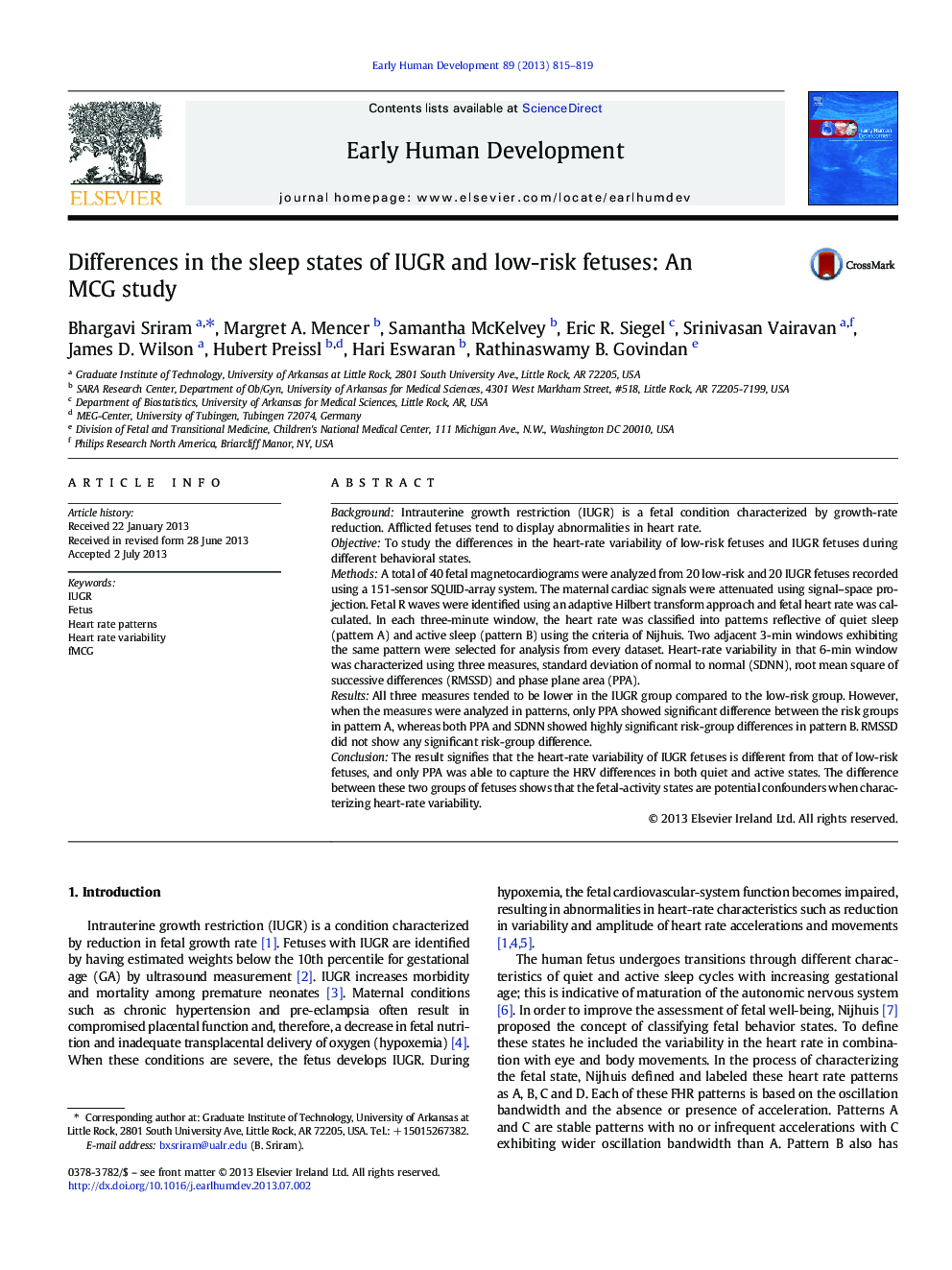| Article ID | Journal | Published Year | Pages | File Type |
|---|---|---|---|---|
| 6171901 | Early Human Development | 2013 | 5 Pages |
BackgroundIntrauterine growth restriction (IUGR) is a fetal condition characterized by growth-rate reduction. Afflicted fetuses tend to display abnormalities in heart rate.ObjectiveTo study the differences in the heart-rate variability of low-risk fetuses and IUGR fetuses during different behavioral states.MethodsA total of 40 fetal magnetocardiograms were analyzed from 20 low-risk and 20 IUGR fetuses recorded using a 151-sensor SQUID-array system. The maternal cardiac signals were attenuated using signal-space projection. Fetal R waves were identified using an adaptive Hilbert transform approach and fetal heart rate was calculated. In each three-minute window, the heart rate was classified into patterns reflective of quiet sleep (pattern A) and active sleep (pattern B) using the criteria of Nijhuis. Two adjacent 3-min windows exhibiting the same pattern were selected for analysis from every dataset. Heart-rate variability in that 6-min window was characterized using three measures, standard deviation of normal to normal (SDNN), root mean square of successive differences (RMSSD) and phase plane area (PPA).ResultsAll three measures tended to be lower in the IUGR group compared to the low-risk group. However, when the measures were analyzed in patterns, only PPA showed significant difference between the risk groups in pattern A, whereas both PPA and SDNN showed highly significant risk-group differences in pattern B. RMSSD did not show any significant risk-group difference.ConclusionThe result signifies that the heart-rate variability of IUGR fetuses is different from that of low-risk fetuses, and only PPA was able to capture the HRV differences in both quiet and active states. The difference between these two groups of fetuses shows that the fetal-activity states are potential confounders when characterizing heart-rate variability.
